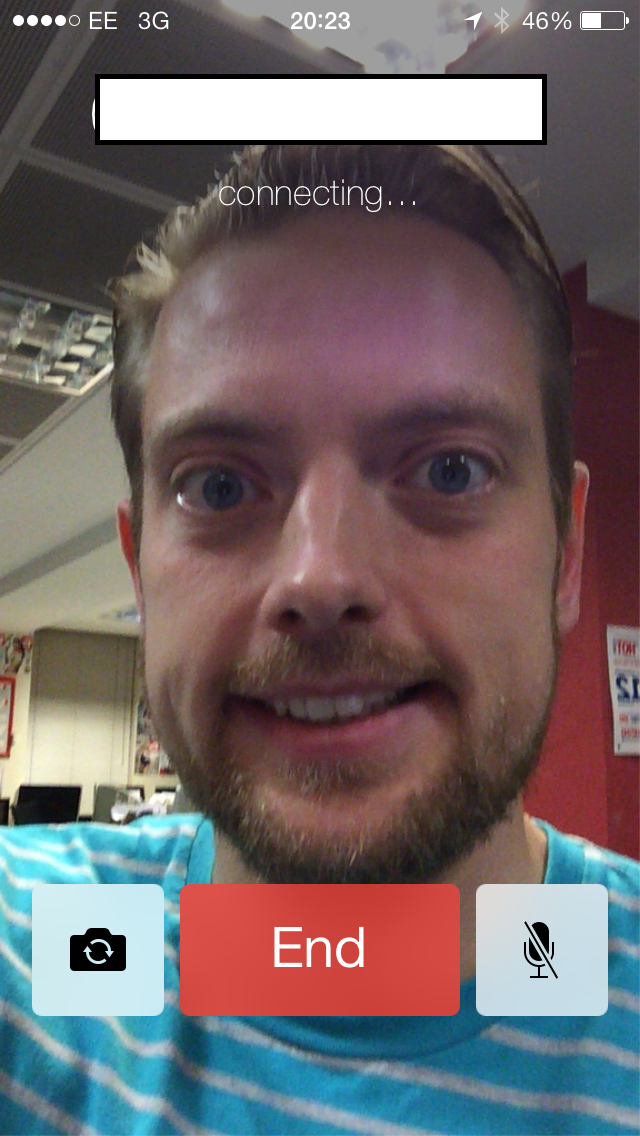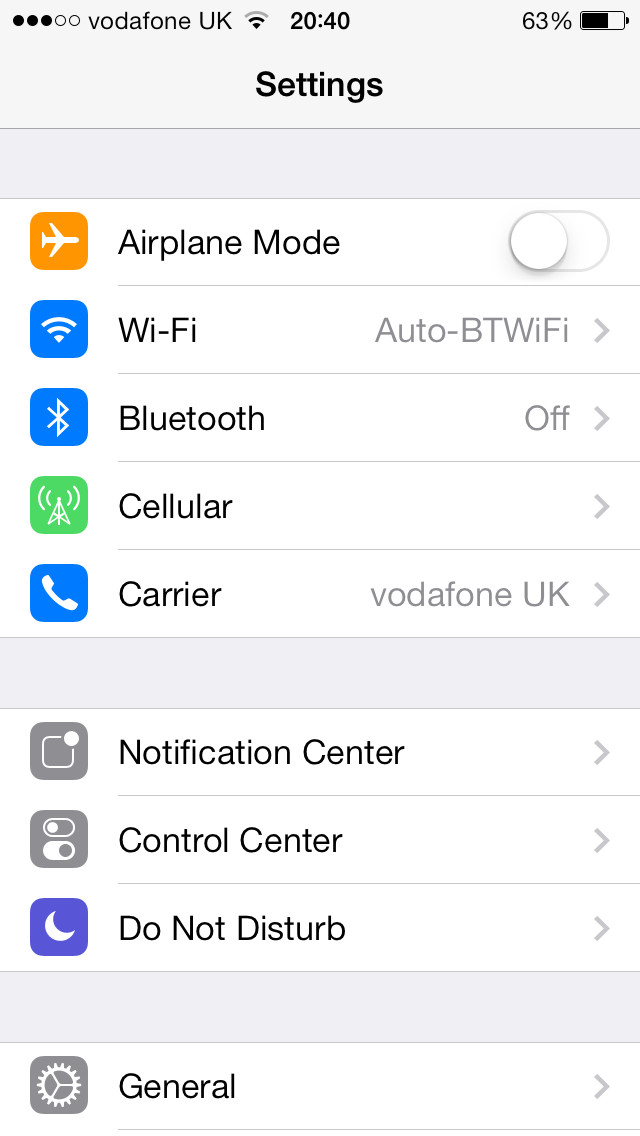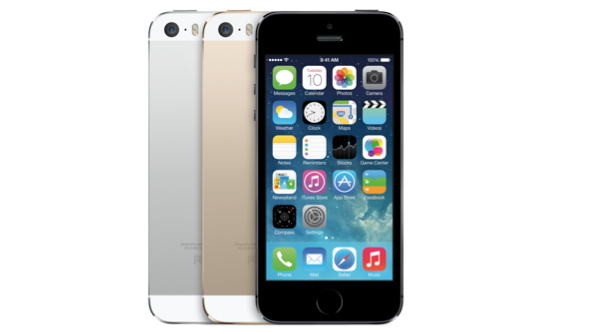Why you can trust TechRadar
Battery life
Battery life on the iPhone 5S is something that a lot of people will be checking out for a number of reasons, and mostly because they'll be curious as to how the updated processor and iOS 7 combine to improve the life of your power pack.
While the iPhone 5 was an improvement in battery life for the iPhone range, there was still room for more, and that's partly come on the iPhone 5S.
The main thing that's been fixed is the fact that leaving the iPhone 5S on standby, perhaps overnight, sees very little drain on the battery. One night we noticed around 15% drop, but after that it was merely 4-5% on average which we can put down to iOS 7 keeping its apps in order a little better.
So that's a big problem of the iPhone battery solved: if its in your pocket, it won't inexplicably run out of juice.

However, there's still a rather large issue we need to address with the battery: and that's the problem of actually using the phone. We test a large number of devices here at TechRadar, and in our more intensive tests it's always interesting to see which phone fare better.
A little photography, web browsing, video watching and flicking through apps not only warmed up the 5S quite considerably but also saw a rather rapid drain in the battery. For instance: streaming BBC iPlayer on the train home for half an hour saw a 20% drop in the battery life. The likes of the Samsung Galaxy S4 and HTC One can do nearly half that, and the LG G2's Snapdragon 800 processor can go even lower.
We can't see how the claims of 8 hours' browsing on 3G holds any water, as that was one area that really hurt the battery and caused the phone to heat up. Talking also drained the power pack, and Apple's quoting up to 10 hours on 3G. Again, we can't see it.
It's not horrendous, and if you're an iPhone user you'll be used to a faster battery drain, but there's definitely a wistful air that hangs over us every time we check out the battery percentage in the top-right corner.
Battery life is improved slightly with iOS 7.1 - but only to a 17% power drop in our video loop test. But testing things out hard on the new platform just confirmed to us that the iPhone 5S can't hold out with general day to day use... and with the new brigade of ultra-efficient Snapdragon 801-enabled handsets coming out now, there's a new level of battery power Apple needs to be hitting with the iPhone 6, as this simply isn't good enough as a flagship now.
However, here's a great little update that will cheer you up: the iPhone 5S charges phenomenally quickly. REALLY quickly. We timed a charge in just a little over two hours from nearly dead - that's great if you just need a slug of juice on the run.
Connectivity
Unsurprisingly the iPhone 5S comes will all manner of connectivity options, but NFC is still the high-profile absentee at the Apple party. Not even the plastic clad iPhone 5C could tempt the firm to give us a bit of contactless tech, and it clearly paints a picture of where the brand stands in this area.
It's worth mentioning again that the iPhone 5S sports Wi-Fi a/b/g/n, 3G and 4G connectivity, with special mention of the latter as this phone supports the most LTE bands than any other smartphone, allowing even more people to take advantage of the superfast network.

There's a new way to control Wi-Fi and Bluetooth 4.0 in iOS 7 with the arrival of the Control Center, which is accessed with a swipe up from the bottom of the screen as we mentioned before.
This brings up some shortcut settings including toggles for both connections, plus you can also enable airplane mode here if you want to go off the grid - or, you know, if you get on a plane.
GPS and GLONASS also make an appearance to help you locate yourself in Maps with earth shattering accuracy (and very quickly, too) and navigate you round the world with the free turn-by-turn satellite navigation system.
The iPhone 5S sports Apple's new physical connection port - dubbed Lightning - on its base which is used for charging as well as connecting to computers and any third party peripherals you may pick up.
It provides a faster connection than the 30-pin port it replaced, allowing for quicker data transfer meaning you won't be waiting around quite so long. Plus you can plug it in both ways round, which saves scrabbling at night.
Apple offers its own cloud storage solution cunningly named iCloud which lets you store all your vital information in its secure servers should the worst happen to your iPhone 5S.
You can back up everything from contacts, mail and calendars to photos, documents and notes to iCloud, and if you've owned an iDevice in the past you can download your settings from that onto your iPhone 5S - saving you from having to re-enter various bits of information.
iCloud also enables the "Find my iPhone" feature, so if you were to misplace your new iPhone you can log onto the iCloud website and see where your phone is on a map.
Once located you have the choice of making play a sound so you can dig it out from behind the sofa, report it as lost or erase the contents of the phone - it's all very clear stuff.
iTunes
No longer is there a reliance in Apple's desktop iTunes software when you come to starting up your iPhone for the first time - no physical connection ever needs to made to a computer during the lifetime of the 5S if you don't fancy digging out your Lightning cable.
If you do decide it's time for things to get physical between your computer and iPhone then you'll need to make sure you've got the latest version of iTunes (that's version 11.1) installed, otherwise it will refuse to play with your new phone.
Why would you want/need to connect your iPhone 5S to your computer? Well perhaps you've got lots of music, movies and photos you want to transfer from your machine to your new phone - iTunes will pull it all in, churn it up and spit it out to your new iPhone in a useable format.
Using iTunes is a rather hit and miss experience, with the software performing far better on a Mac than a Windows PC, but either way it's usually a long, drawn out process which involves lots of syncing - so avoid it if you can or are tremendously regimented in your music organisation.
Current page: Battery life, connectivity and iTunes
Prev Page Benchmarks Next Page Maps and navigation
Gareth has been part of the consumer technology world in a career spanning three decades. He started life as a staff writer on the fledgling TechRadar, and has grew with the site (primarily as phones, tablets and wearables editor) until becoming Global Editor in Chief in 2018. Gareth has written over 4,000 articles for TechRadar, has contributed expert insight to a number of other publications, chaired panels on zeitgeist technologies, presented at the Gadget Show Live as well as representing the brand on TV and radio for multiple channels including Sky, BBC, ITV and Al-Jazeera. Passionate about fitness, he can bore anyone rigid about stress management, sleep tracking, heart rate variance as well as bemoaning something about the latest iPhone, Galaxy or OLED TV.
